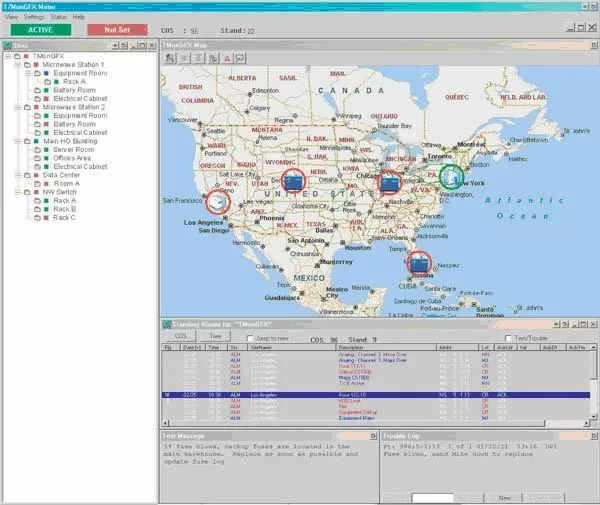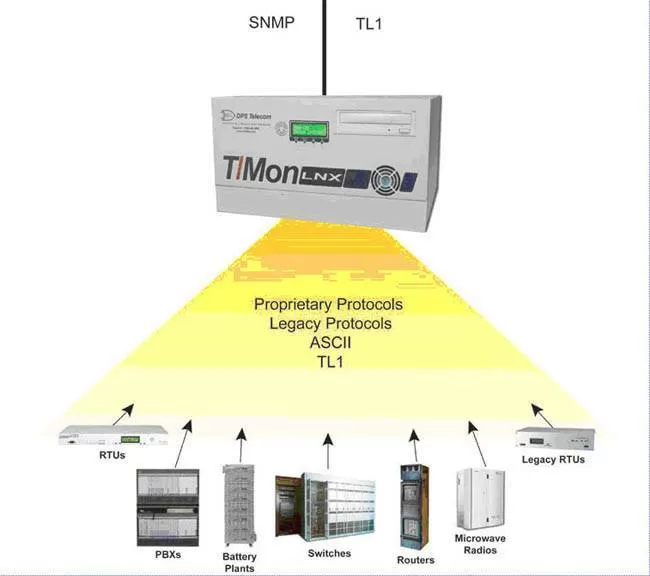Download our free Monitoring Fundamentals Tutorial.
An introduction to Monitoring Fundamentals strictly from the perspective of telecom network alarm management.
1-800-693-0351
Have a specific question? Ask our team of expert engineers and get a specific answer!
Sign up for the next DPS Factory Training!

Whether you're new to our equipment or you've used it for years, DPS factory training is the best way to get more from your monitoring.
Reserve Your Seat Today
Jim Mackenzie is a Network Planner for TBayTel, a telecommunications company offering Telephone, Internet, Television, and Cellular services in the 300,000 square kilometer area in Northern Ontario around Thunder Bay. "My job as a Planner is to work with Marketing to figure out what services we want to offer, and then how to optimize the network to provide those services including how we're going to provision, operate, manage, and support them."
"It's hard to build a reliable network if you can't first rely on having secure sites, with proper alarms and environmentals."
Of course, planning and implementing a network slightly larger than Arizona is no small task. Mackenzie and TBayTel want to focus on building a network that provides high service quality and throughput for their customers. To do this, they need to first make sure that their sites stay online and operational, to maximize network uptime. "If you don't have good control of your sites, it'd be hard to maintain a quality network through them" Mackenzie says.
Mackenzie is looking to DPS Telecom's equipment to provide TBayTel's sites with that level of visibility and control. "What I like about DPS equipment is that you can do all your dry contact alarms, door alarms, and temperature and power monitoring discretely in one RTU. But more important is analog trending - towards proactive maintenance" he says. "Being able to monitor everything at any given site, with a single RTU, simplifies your monitoring scheme and prevents blind-spots at your sites. The analog trending provides the remote visibility you need to maintain your environmentals properly, and even to preempt certain problems."

Effective monitoring practices will allow TBayTel to take a proactive approach to network maintenance, catching problems before they occur. "We suffer rotating commercial power outages in some parts of our network and we need to know our sites' Power and Generator status on a real time basis as far as dispatching techs goes." With effective discrete and analog monitoring systems, TBayTel will know when generators switch-on, and how much fuel or battery life they have remaining. Knowing the power situation at their sites in real time allows them to send the right Techs and equipment to the right sites to prevent service-affecting outages.
"RTUs provide good remote visibility and, at the same time, an Out Of Band path to use to restore the network, if the primary network is down."
"It's also our intent to establish an Out Of Band management network that's separate from our customer networks." Mackenzie is looking at Remote Test Units that support multiple means of transport like the NetGuardian G5 series remotes. These RTUs also incorporate a terminal server to allow craft/console access onto remote devices. "RTUs provide good remote visibility and, at the same time, an Out Of Band path to use to restore the network, if the primary network is down."
"The graphical functionality of the T/Mon means we'll have better dispatching coming out of the NOC."
In addition to using DPS RTUs to keep a close watch on TBayTel's sites, Mackenzie is also looking to use T/Mon to make managing TBayTel's network alarms easier. "It'll provide a graphical display to our guys in the NOC and the regions, of what's going on in all parts of the network. They can use the visual cues on the maps to intuitively decide where they need to drill down further, and determine where they need to dispatch technicians." With GFX, TBayTel's NOC technicians won't have to waste time when an alarm occurs, trying to associate an alarm with a site. They'll see where alarms occur right on the T/GFX map. "The graphical functionality of the T/Mon means we'll have better dispatching coming out of the NOC." And because it'll parse TL1 and ASCII alarms, they can use T/Mon to monitor virtually the entirety of TBayTel's physical network.

T/Mon will also integrate nicely into TBayTel's current site-monitoring operations. "We intend to run the T/Mon LNX with a northbound SNMP feed into our current Manager Of Managers (MOM), and doing our trouble ticketing that way," Mackenzie says. He explained that TBayTel currently uses a Manager of Managers that isn't perfect for them yet, but it links into their trouble-ticketing system. They don't want to lose that functionality when they implement the T/Mon, and they certainly don't want to lose visibility or complicate things by having alarms reporting in from two separate managers. Because T/Mon also outputs SNMP, TBayTel can use it to report upstream to another manager, so they can maintain their network the way they're used to.

"By meeting with the DPS staff, you can figure out the art of the possible, and learn where DPS wants to take their technology, because you want to get there with them."
Factory Training Shows Off "The Art of the Possible"
Mackenzie recently came to a factory training event at DPS Telecom's headquarters in Fresno, CA to learn about T/Mon and its capabilities. While at training, he had the chance to use live DPS equipment in the classroom. "The training was good, and gave me a good appreciation for the gear and what all it can do. It allows you to see how extensible the DPS platform is, as far as getting to further functionality, like derived alarms and more," he says.
He also had the chance to tour DPS Telecom's facilities and meet many of the people involved in the design, engineering, and production of DPS products. "By meeting with the DPS staff, you can figure out the art of the possible, and learn where DPS wants to take their technology, because you want to get there with them."